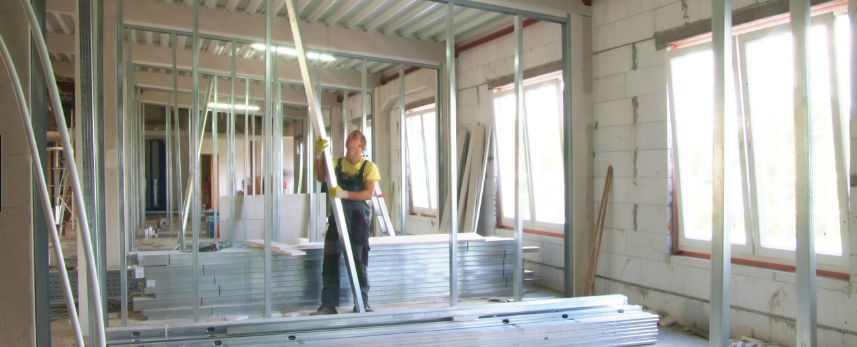The History of Drywall in the United States

These days, drywall is everywhere. It is probably covering the walls in the room you are sitting in right now. No matter if you’re here in Maryland, nearby in Pennsylvania or DC, or wherever you are in the United States, drywall is never far away. And, of course, its popularity is not really a surprise. This is a versatile material which is easy to use, offers insulating benefits, and helps to quiet a room as well. For the vast majority of construction projects, this is one product that doesn’t have to be debated – it is just assumed that drywall will be used.
But how did drywall become so popular? Let’s take a closer look.
An Old Idea
The modern form of drywall may not be all that old, but it does have ancient roots. In Egypt, plaster has been used in construction for thousands of years. That plaster was made from burnt gypsum, and it could be said that these uses were the first forms of what would eventually become drywall. The Babylonians, Romans, and Greeks all used various forms of plaster in their early construction efforts.
A Breakthrough
It was during the 18th century when a French chemist made a notable breakthrough with regard to gypsum. Antoine Lavoisier was able to analyze the chemical composition of gypsum, allowing for the development of Plaster of Paris. You can still purchase Plaster of Paris all these years later, a testament to just how significant this breakthrough was centuries ago.
Jumping Across the Pond
Using wallboard to cover the interior of rooms is an idea which developed in the U.S. during the late 19th century. These early products included Plaster of Paris which had been trapped between pieces of felt paper. Today’s drywall doesn’t look much like those early efforts, but the basic idea and form of drywall got its start at that point. This original product was called Sackett Board, after creator Augustine Sackett.
As is often the case with new building materials, it took a while for this idea to catch on. There were concerns among many in the construction industry about deviating from traditional methods which had worked over the years. The old method of manually creating walls from plaster hung around for decades until World War II.
Without as much labor available to plaster walls, more and more builders had to use drywall because it required fewer man-hours to install. In addition to a lack of labor, money was also tight during this difficult time in American history. As a result, the cost savings of drywall became more and more attractive. Even after the war ended, the wheels had been set in motion and there would be no turning back from the drywall revolution.
Today, drywall is big business, and the product can be seen in nearly every home across the country. The largest producer of drywall – United States Gypsum Company – posts huge annual sales numbers each year as proof of the popularity of this building material. Given its many advantages and long history, it seems unlikely that drywall will lose popularity anytime soon.
